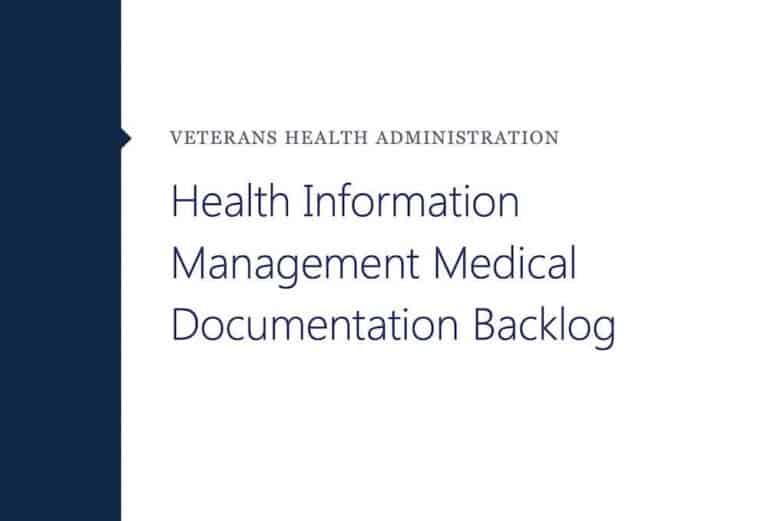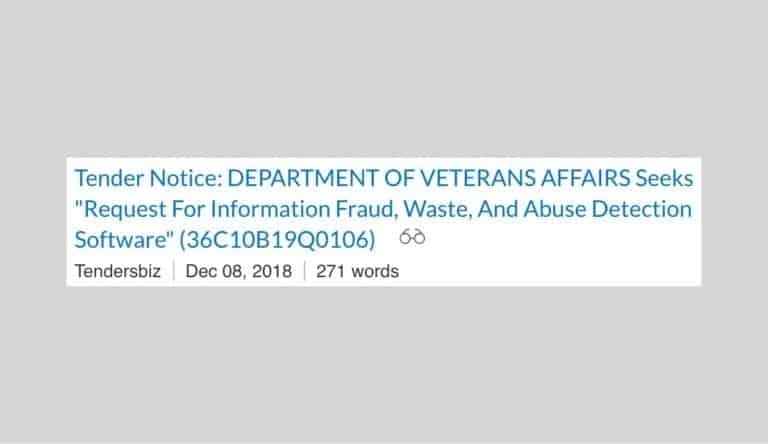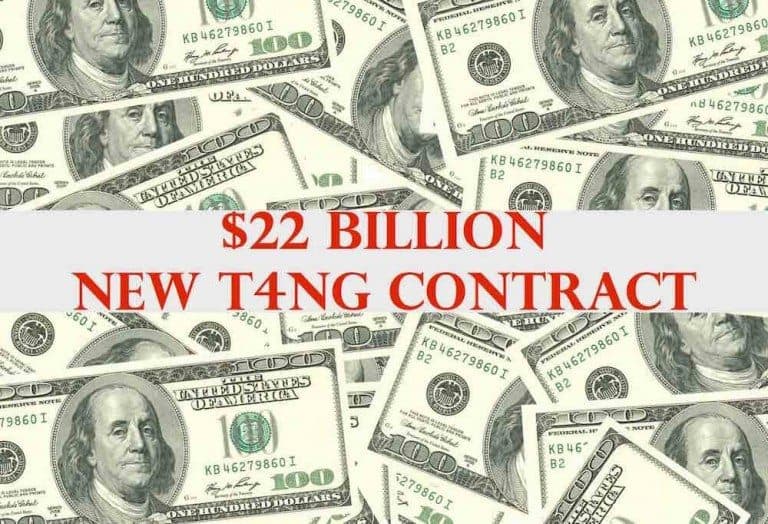FY2025 Veteran Readiness and Employment Subsistence Rates See Increase Year Over Year
There is good news for many veterans during Fiscal Year (FY) 2025 subsistence payments.
VA provided a significant increase in the monthly subsistence payments for veterans in the Veteran Readiness and Employment (formerly Vocational Rehabilitation and Employment) program, which supports veterans enrolled in an educational or training program.
That is the good news. Minimally, a single veteran without dependents may receive $793 per month while in training up to $3,355.39 per month with 25 dependents.
The there is also some no-so-good news.
You may recall in late 2021 many talking heads and pundits on cable news stations towed the party line to not worry about inflation – – many of whom carried the water for the big lie that inflation was “transitory.”
That inflation amount certainly is not transitory now as it appears in our subsistence amount that increased by 3.2% to keep up with the Consumer Price Index (CPI) increase.
Did we really keep up? Likely not.
RELATED: What ‘Transitory’ Inflation Really Means
So the good news is the federal government did increase our subsistence pay in many areas.
The bad news is the federal government, through its policies and spending, created an inflationary spiral over the past few years that outstripped the subsistence increase for practically everyone. Instead, you are actually receiving less when your purchasing power is factored into the equation.
(Hint: the program’s name change is still pending APA changes to the regulations. It is referred to frequently as VA Voc Rehab, Chapter 31, VR&E, and Vocational Rehabilitation.)
Inflation vs Your Benefits
There are many theories about what is happening right now with our economy.
We could debate on whether this is Russia’s fault, the fault of the Federal Reserve, the fault of greedy homeowners demanding premiums on their homes, or the fault of bad White House policies over the past two decades leading up to now.
Whether it is any one party’s fault is really a red hearing (an argument serving to distract rather than address the core issue). Most likely, the cause of the current inflationary cycle is a combination of factors and policy decisions leading up to now over the past many years.
(I plan to write separately to explain what is happing and what to expect.)
For the purposes of this article, just know that inflation serves, in function, as a tax on your benefits. As inflation grows, your purchasing power become less. On the flip side, fixed price loans issued prior to significant increases in inflation will effectively cost less. In real terms, the amount the federal government needs to pay lenders for the recent bailouts, social security payments, veterans benefits, and other obligations, costs less whenever inflation outstrips the payment amount made.
Some of you may recall, last year, the Federal Reserve referred to inflation as “transitory,” which was total nonsense but parroted by talking heads at news networks and legacy media reporters. The White House even went as far as to say inflation was a good thing, but this is just not true.
Over the past three years, gas has nearly doubled, cost of feed for livestock has doubled in some instances, cost of fertilizer has increased 10-fold per acre ($200 to $2000), cost of food and housing has increased by up to 30 percent or more depending on what you are looking at, and utilities are also increase significantly.
By the time the federal government gets around to another increase in benefits payments, our payments at current dollar amounts will be worth significantly less.
For our purposes, we simply need to know how inflation will affect our benefits and plan accordingly. I do not think we are anywhere near “top inflation”.
Enough of the doom and gloom.
Here is what you need to know about the subsistence pay and how it all works.
If you only came here to see the rates, skip to the table below. If you came here to learn more about the difference in the rates, how to know which rate to pick, and more about the resources of this website, keep reading.
What This Website Is All About
Many veterans reading this page probably have no idea why this website exists or what it’s for, so give me 30 seconds for our elevator talk.
I created the DisabledVeterans.org universe to help educate veterans about their benefits. More importantly, the site serves as a platform to give a voice to those of us who struggle with agency politics and personnel when getting the benefits we were promised.
RELATED: Veteran Readiness Scandal Exposed By CBS
There was nothing like this online at the time – circa 2009 – an education and news website with a robust social media presence, (see our Facebook Group) helping educate disenfranchised disabled veterans about VR&E and other benefits.
I am an investigative journalist turned veteran rights attorney
Yes, VA did pay for my education including law degree.
Yes, I did fight VA for over a decade for all benefits including increasing my disability rating from 10 percent to 100 percent. The backpay I won allowed me to buy this website and build out the content on it.
As a lawyer (see www.benjaminkrauselaw.com), I help veterans who were denied VR&E benefits, Disability Compensation, injured by VA clinicians, and with Freedom of Information Act and Privacy Act requests for their records and other things.
As an investigative journalist, I report on issues veterans bring to my attention and general news topics affecting veterans’ receipt of benefits including health care. Over the past decade, we’ve exposed major scandals affecting non-VA emergency reimbursement, use of unqualified doctors to evaluate veterans with TBI, the ridiculous VA “Crow Flies” rule for Community Care, and VR&E’s erratic adjudication of veterans’ benefits (my first scandal, covered by CBS Evening News with Katie Couric.
About VR&E, I later created an online VR&E course and ebook called Voc Rehab Survival Guide.
Proceeds from sales keeps this website online. Software tools and research resources ain’t cheap much less free. Future sales will help pay for reporters and other resources veterans’ desperately need to avoid agency screw jobs like compensation reduction actions and other lowballing efforts.
I understand what’s affecting disabled veterans like you because I am a disabled veteran like you.
Many Veterans Unaware Of Veteran Readiness and Employment Perks
Many veterans using the GI Bill may be unaware they are qualified for thousands more in benefits through Veteran Readiness and Employment much less the option to use VR&E, receive the higher GI Bill BAH subsistence payment amount, while also saving back their GI Bill for later use.
What is not to love about this new system rolled out April 2021?
Chapter 31 VR&E program participants may be eligible for subsistence payments at dramatically different rates based on remaining GI Bill entitlement and location.
Veteran Readiness Name Change from Vocational Rehabilitation and Employment
The pubic name change came in the summer of 2020 as a result of human-centered design research. Using new technologies, agency leadership learned veterans were frequently confused by the terms “vocational” and “rehabilitation” when it came to understanding the program. So, they changed the name of the program to Veteran Readiness and Employment.
(In true VA fashion, the agency failed to change the name legally and is presently working through APA notice and comment requirements to properly change the nearly two years later.)
Post 9/11 GI Bill BAH Rate Increase
Starting January 1, 2023, the Basic Allowance for Housing (BAH) rates increased 3.2 percent – this will help veterans using VR&E who are also entitled to the GI Bill.
Veterans using Chapter 31 VR&E who lack GI Bill eligibility to qualify for the BAH subsistence rates generally receive lower subsistence rate payments unless they have higher numbers of dependents.
Traditional VR&E Subsistence Rate Increase
Under the traditional Chapter 31 VR&E rates, a veteran without dependents may receive a subsistence rate of $793.01. Meanwhile, a veteran with at least two dependents is eligible to receive $1,159.17, with an additional dependent institutional rate of $84.47 per dependent. The maximum a veteran can receive is $3,355.39. This would mean you have up to 25 dependents.
The GI Bill is a fantastic benefit where many veterans receive a subsistence payment plus coverage for tuition at a state university for up to 36 months.
Yes, that is fantastic. But is it the whole story?
It is for veterans without qualifying disability ratings where the disability results in a vocational impairment the effect of which has not been overcome.
The Chapter 31 VR&E vs GI Bill Myth
Veterans with disability ratings of 10 percent or higher may consider using Chapter 31 VR&E based on a little secret about that program that some Veteran Service Organizations (VSOs) fail to understand.
Some well intended but misinformed VSOs keep telling disabled veterans that the GI Bill is the only way to go while leaving out one key detail.
<< Disabled veterans with an Employment Handicap or Serious Employment Handicap may be approved for training in professional careers where the training lasts longer than 36 months in total. >>
What does that mean and why does it matter?
Employment Handicap and Serious Employment Handicap
The concept of an Employment Handicap can get rather involved, so here is a shortened explanation of what this means.
Generally, a veteran with a service-connected disability that causes a vocational impairment the effects of which have not been overcome through training or other criteria will be deemed to have an Employment Handicap. The program will then evaluate the veteran for a potential Serious Employment Handicap (SEH).
Veterans deemed to also have an SEH may be eligible for additional training beyond what is considered necessary. Such a finding may also waive certain limitations to the total number of months of education the veteran may receive as well as time constraints to use the benefit.
Why does this matter?
Money Left on the Table: Higher E-5 BAH Of GI Bill vs Standard VR&E Monthly Pay
For disabled veterans entitled to Chapter 31 VR&E benefits, these veterans may receive well over 36 months of benefits including subsistence payments. This is especially the case for some veterans with an SEH.
Veterans with remaining entitlement to the GI Bill may then opt in for the higher subsistence payments at E-5 rates equal to those of the GI Bill while also getting all tuition and expenses paid for well over 36 months.
You know how much that can add up to for some veterans in their undergrad who want to become doctors or lawyers after they graduate?
A lot of money.
For example, a veteran approved for a rehabilitation plan that includes completion of both an undergraduate degree and graduate degree may also receive the higher BAH subsistence amount for the entire duration of training for up to 48 months or more.
Two examples of this would be a veteran who is approved to become a physician or lawyer.
San Francisco veterans who follow the advice of the VSO may be leaving $48,000 on the table in subsistence payments each year beyond 36 months if the veteran takes the bad advice.
Instead of receiving nearly $5,000 per month, VR&E would instead pay only $832.03 per month.
Is this a good deal?
It is if you saved back some GI Bill entitlement prior to applying for benefits from Chapter 31, VR&E.
Here is the agency’s breakdown of the subsistence increase.
VA Policy Document On Subsistence Rate FY 2025
On October 1, 2021, an increase to traditional Chapter 31 subsistence allowance rates went into effect.
The remainder of this post highlights the following:
- The new Chapter 31 rates and the first increased payment date
- Processing subsistence allowance in Corporate WINRS Subsistence Allowance Module (SAM)
- How running Chapter 31 awards will be adjusted
- How Veterans will be notified about the Chapter 31 increase
- Election of alternate subsistence allowance under Public Law (PL) 111-377
- Who to contact with Chapter 31 subsistence allowance questions
1. The New Chapter 31 Rates And The First Increased Payment Date
The enclosed table reflects the new traditional Chapter 31 VR&E subsistence allowance rates that are effective October 1, 2022 through September 30, 2023. Since the Department of Veterans Affairs (VA) pays subsistence allowance for training that has been completed in the previous month, the first payment at these rates were reflected in the November 1, 2022 subsistence allowance.
RELATED: Voc Rehab Survival Guide (Ben’s ecourse on winning Chapter 31 VR&E benefits)
Chapter 31 Subsistence Allowance Rate Increase as of October 1, 2024
Based Upon 3.2% Consumer Price Index (CPI) Increase
| Type of Training | Training Time | No Dependents | One Dependent | Two Dependents | Each Additional Dependent |
|---|---|---|---|---|---|
| Institutional; Nonpay or nominal pay work experience in a facility of a federal, state, local, or federally recognized Indian tribe agency; Improvement of Rehabilitation Potential: | Full-Time | $793.01 | $983.65 | $1,159.17 | $84.47 |
| ¾ Time | $595.86 | $738.81 | $866.65 | $64.98 | |
| ½ Time | $398.69 | $493.97 | $580.64 | $43.34 | |
| ¼ Time¹ | $199.32 | $247.02 | $290.33 | $21.62 | |
| Nonpay or nominal pay on-job training in a facility of a federal, state, local, or federally recognized Indian tribe agency; training in the home; vocational course in a rehabilitation facility or sheltered workshop; Independent instructor: | Full-Time Only | $793.01 | $983.65 | $1,159.17 | $84.47 |
| Farm Cooperative, Apprenticeship or other On-Job Training²: | Full-Time Only | $693.34 | $838.47 | $966.31 | $62.84 |
| Combination of institutional and on-job training (institutional Greater than ½); Non-farm Cooperative Institutional Training and Non-farm Cooperative On-Job Training (FT Non-Farm Coop/Institutional): | Full-Time Only | $793.01 | $983.65 | $1,159.17 | $84.47 |
| Combination of Institutional and On-Job Training (On-the-Job Greater than ½); Non-farm Cooperative Institutional Training and Non-farm Cooperative On-Job Training (FT Non-Farm Coop/On-the-Job): | Full-Time Only | $693.34 | $838.47 | $966.31 | $62.84 |
Effective 10-01-2023, the maximum monthly rate for Chapter 31 Subsistence Allowance is $3,355.39.
1 The quarter-time rate may be paid only during Extended Evaluation.
2 For On-Job Training, training wage plus subsistence allowance cannot exceed the journeyman wage.
3 This maximum rate was calculated based upon full-time enrollment for a Veteran with the following dependents: spouse, mother, father and 25 children.
5. Election of Alternate Subsistence Allowance under Public Law 111-377: Post 9/11 Subsistence Allowance (P911SA) Rate
As an informational addendum to this form letter, the following subsistence allowance option has been included. The law implementing this allowance option became effective in late fiscal year 2011, and is included here for use in comparing options for subsistence which may be open to the Veteran participant.
Public Law 111-377, Section 205 amended Title 38 of the United States Code, Section 3108(b), effective August 1, 2011.
This change in the law authorizes VA to allow a Veteran, entitled to both a Chapter 31 subsistence allowance and Post 9/11 GI Bill Chapter 33 educational assistance, to elect to receive a payment in an alternate amount instead of the regular Chapter 31 subsistence allowance. To receive the alternate payment, referred to as the P911SA rate, a Veteran must make an election of benefits with an effective date on VA Form (VAF) 28-0987, Election for CH 31 Subsistence Allowance (CH31SA) Rate or Post-9/11 Subsistence Allowance (P911SA) Rate.
The alternate payment will be based on the military basic allowance for housing (BAH) for an E-5 with dependents residing in a military housing area that encompasses all of, or the majority portion of, the ZIP Code of the training facility, agency, or employer providing the rehabilitation program. Training in foreign institutions and training that is solely on-line or in-home will be based on the BAH national average.
How To Calculate Your BAH Rate
The Department of Defense (DoD) sets BAH rates each calendar year, therefore, new BAH rates are effective January 1st each year, not October 1st. BAH for full-time attendance (or rate of pursuit) may be calculated at the DoD website:
- https://www.defensetravel.dod.mil/site/bahCalc.cfm
- Enter year (“2022”), ZIP Code of the training facility (school, employer for OJT programs, or agency approved for work experience programs), and “E-5”
- Click “calculate”
- Use rate for “E-5 with dependents”.
- Per Public Law 115-48, participants who used entitlement to Chapter 31 benefits and services on or before December 31, 2017, will add an additional amount to this rate. The additional amount will be published January each year.
For training at a facility within a United States (U.S.) Territory (not solely online), identify the appropriate locality code (similar to a U.S. ZIP Code) where the Veteran is enrolled in training.
Verify that the site is located in one of the U.S. Territories under which the Overseas Housing Allowance (OHA) under the Post-9/11 Chapter 33 is payable: American Samoa, Northern Mariana Islands, Puerto Rico, Virgin Islands and Guam.
Go to the Department of Defense website:
- https://www.defensetravel.dod.mil/site/ohaCalc.cfm
- Enter the year, month and day. If the term starts prior to the 15th day of the month, use the 1st day of the month in which the term begins; if the term starts on or after the 16th day of the month, use the 16th day of the month in which the term begins.
- Choose the correct location from the drop-down box.
- Choose pay grade “E-5”.
- Choose “Yes” in the dependents box.
- Click “Calculate” to obtain the rate.
- The correct rate of pay for P911SA is titled “OHA Rental Allowance”.
Who To Contact For Chapter 31 Subsistence Allowance Questions
Please refer to M28C located on the Knowledge Management Portal (KMP), for additional procedural guidance on the authorization and processing of subsistence allowance payments.
Questions regarding subsistence allowance award processing may be directed to your district VR&E Field Liaison at the e-mail address listed below.
| District | Primary | Alternate | |
| Northeast | Latrese Arnold | Veronica Brown | VAVBAWAS/CO/VRE/NE |
| Southeast | Veronica Brown | Latrese Arnold | VAVBAWAS/CO/VRE/SE |
| Continental | LeGuster Seawright | Lynn Horwatt | VAVBAWAS/CO/VRE/CONT |
| Pacific | Lynn Horwatt | LeGuster Seawright | VAVBAWAS/CO/VRE/PA |
How To Email VR&E Employees
So, if you run into issues apparently you can contact any of the above-listed individuals based on the area where your regional office is located. Agency emails are simple enough to figure out, usually.
For example, the email for Lynn Horwatt is likely [email protected]. Send her a note if you have issues and use a Regional Office assigned to the Pacific.





A good portion of people in the psychology field consider your mental health benefits to be “secondary gain” that “prevents you from getting better.” They have not found a solution to this problem and will not fire people with that sort of mentality. Think about that when you go in there… because if your behavior takes a turn for the worst… there’s no telling how they’ll judge you. Their bogus philosophy and views will sink the relationship guaranteed so, keeping in mind that they offer minimal help, which they’ll blame on you, might as well get compensation and pension if you can… and haul ass. Those pseudo intellectuals in there have lost it and have no actual desire to have a relationship with you. They have other pseudo intellectuals for that. You’re just pseudo intellectual cannon fodder.
Someone who was employed by the Veterans Healthcare Administration could whip their penis out on someone and they’d only be transferred elsewhere. On the other hand, if you’re a veteran, your ass just might see the federal penitentiary..at least jail and character assassination in records forever. The super citizen dynamic is just one reason why that place is a shit house.
What you do is, hire a prostitute off the streets to wheel you into the psychologists office at VA in a big baby carriage. Tell them she works and you don’t because she does everything for you… even feeds you like a baby three times a day. Tell them if she refuses, you yank her hair out. Then demand compensation for your “personality disorder” that you got from the war, and if not, there’s gonna be a Timothy McVeigh style attack.😆
Veterans keep getting treated like garbage and those people in there pull one over on them constantly. When you go there, you ask for something reasonable, they do it, you go back. Rinse and repeat until you ask for something reasonable, they say no, you walk out. That’s it, that’s all besides maybe tell a manager WHY you’re leaving. Don’t let them make it up to you or anything like that, promises, gaslighting, nothing. Forget about “what I’m owed.” They feed off that too. Just walk out and find an attorney and tell the the story. Whether or not a case is filed doesn’t matter. You’ve done your duty. Staying there is not doing your duty. It’s being a sucker, punk, chump, pinata, punching bag, political stooge to prop up a redistribution apparatus where the most money will NEVER go to you no matter how much they get.
The Veterans Healthcare Administration isn’t good for people’s mental health. The place has too many mentally unwell and incompetent people working there. That’s part of the reason for all the suicides. And if you go in there and say stuff like that… they’ll use the shit to suggest your character is the problem. That’s about the biggest scam I can think of besides those people blaming the voters and conservatives for all the VAs problems. They got a trillion dollars over 5 years!!!
With the federal courts derelict in their duties in our democracy, which they are, it would take at least a decade of sustained acts of heinous terrorism to make VA work in a functional manner. Otherwise lawsuits would fix the problem, but here lately, the USA isn’t doing the democracy thing very well.
The Veterans Healthcare Administration, where the flopped middle class goes to work, all the pseudo intellectuals, conservative haters, med students looking for something to put on their resume, washed up never were assholes, denial of care psychos, soccer moms, most of those people wouldn’t make a dime without the VA because of their poor culture and attitude. Not to mention elevated rights, immunity, and unlimited legal resources backing their poor treatment of other human beings. Trump only firing a few thousand of them… should be firing a few hundred thousand. He’s a crook himself.
They might as well hand out insurance cards because that theater production at the Department of Veterans Affairs isn’t fooling anyone anymore. A monkey could hand out pills and communicate with people, over a trillion dollars spent on that wreck from 2019-2024, still denial of care happening. Our political structures are a broken joke. They need to be sued out of existence.
Keep seeing an article that says, “The Veterans Health Administration has hired more than 32,000 people this fiscal year, which began in October.” Yet not too many people caught it when they cut psychiatrist pay significantly back in 2015/2016 time frame. It’s back up now but just goes to show you how they fuck everyone. When will they admit to feeding people pills for 5-15 years instead of doing surgery.. hoping vets will either die or get it elsewhere… only to turn around and have to do the surgery later after they’ve suffered for 10-15 years. The rotten mother fuckers lie and they should be giving out insurance cards or at least for the love of God provide an insurance program that people can buy into. Stop all the false advertising that VHA is a functional and complete healthcare system. It’s not funny anymore.
USA couldn’t pull off a public sector even if they tripled the budget… just to many bad people and unwillingness to fire trouble makers and assholes. Insurance cards are the only solution. Make the VA a public hospital where anyone can go but don’t force vets to go there for Christ sakes epic flop.
Thanks for the update on the increases.
No one is here!!!!
I agree though everything is a mess.
The epitome of VA employee is Community Care. After my primary care medical person approved a Community Care consultation, it took Community Care three months to phone me to leave a message. I returned the call. I was on hold for 90 minutes. And still the person failed to get an appointment for me. She simply could not understand English. She tried to send me to a doctor 90 miles from my residence. VA Community Care is an absolute failure for me. During the previous four years, Community Care did their job one time. Yes, I will say it again; one time successful. And it still took six months to get the work done. VA is a moribund institution no more than a temp check and check the blood pressure. Nurses have become abusive and disrespectful. One told me to drive for a blood pressure medication “at no cost”. I responded to that one and told her that I had paid dearly by serving as a combat veteran in Vietnam, 1969-1969. In one single night our unit lost ten young men from Bardstown KY. How did the nurse respond? She initiated action against me by the Discretionary Committee, which euphemistically means the Disciplinary Committee. Remember the Disciplinary Committee is chaired by doctors. Naturally Disciplinary Committee functions to support doctors. The veteran patient is ignored and condemned with strict surveillance measures along with limited medical care.
I’ve seen places where they never answered the phone. You’d never know the place existed if not for word of foul mouth… and you’ll understand foul mouth once you get there. Bunch of fuckin wasteoids pretending to provide healthcare.